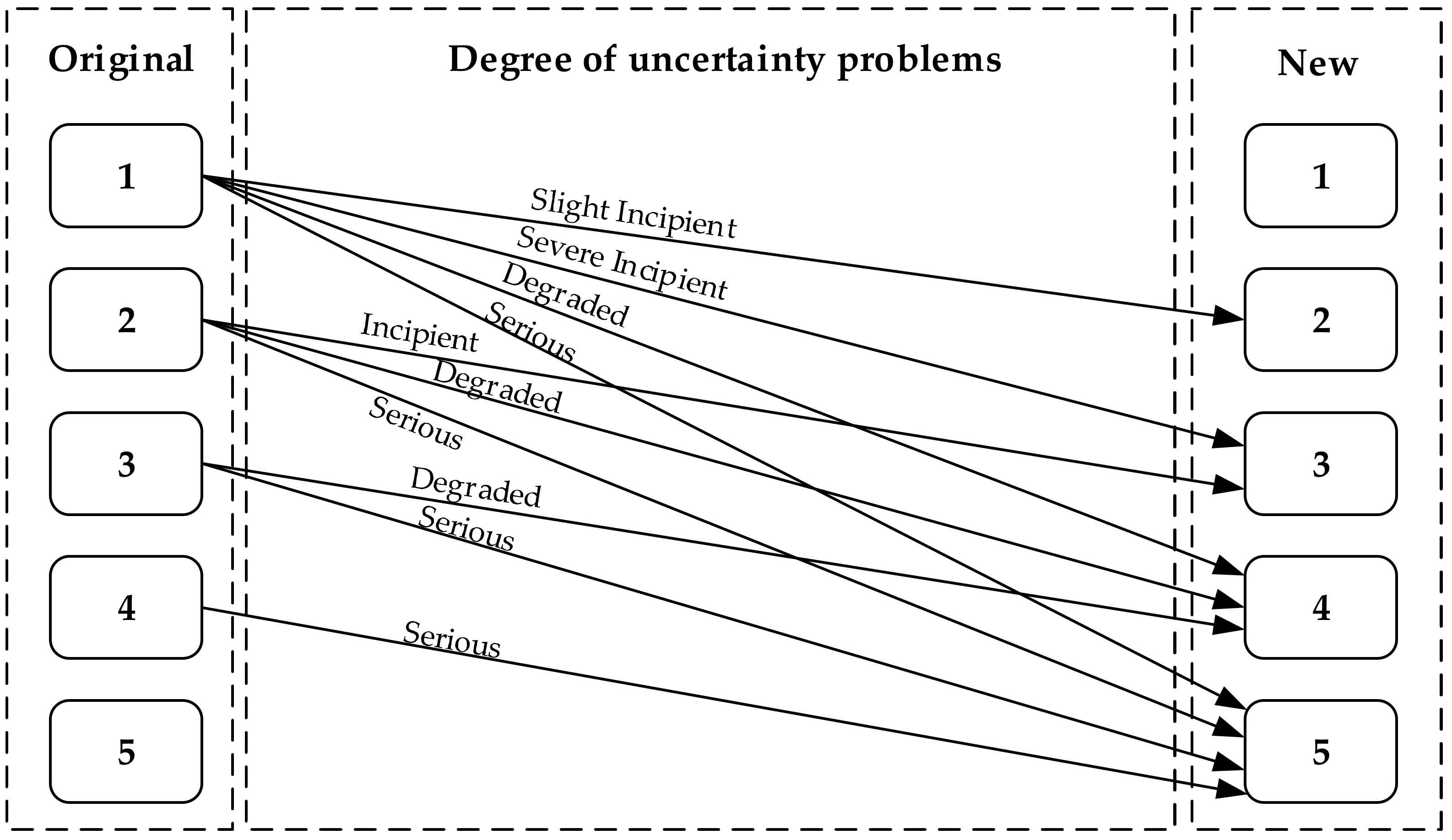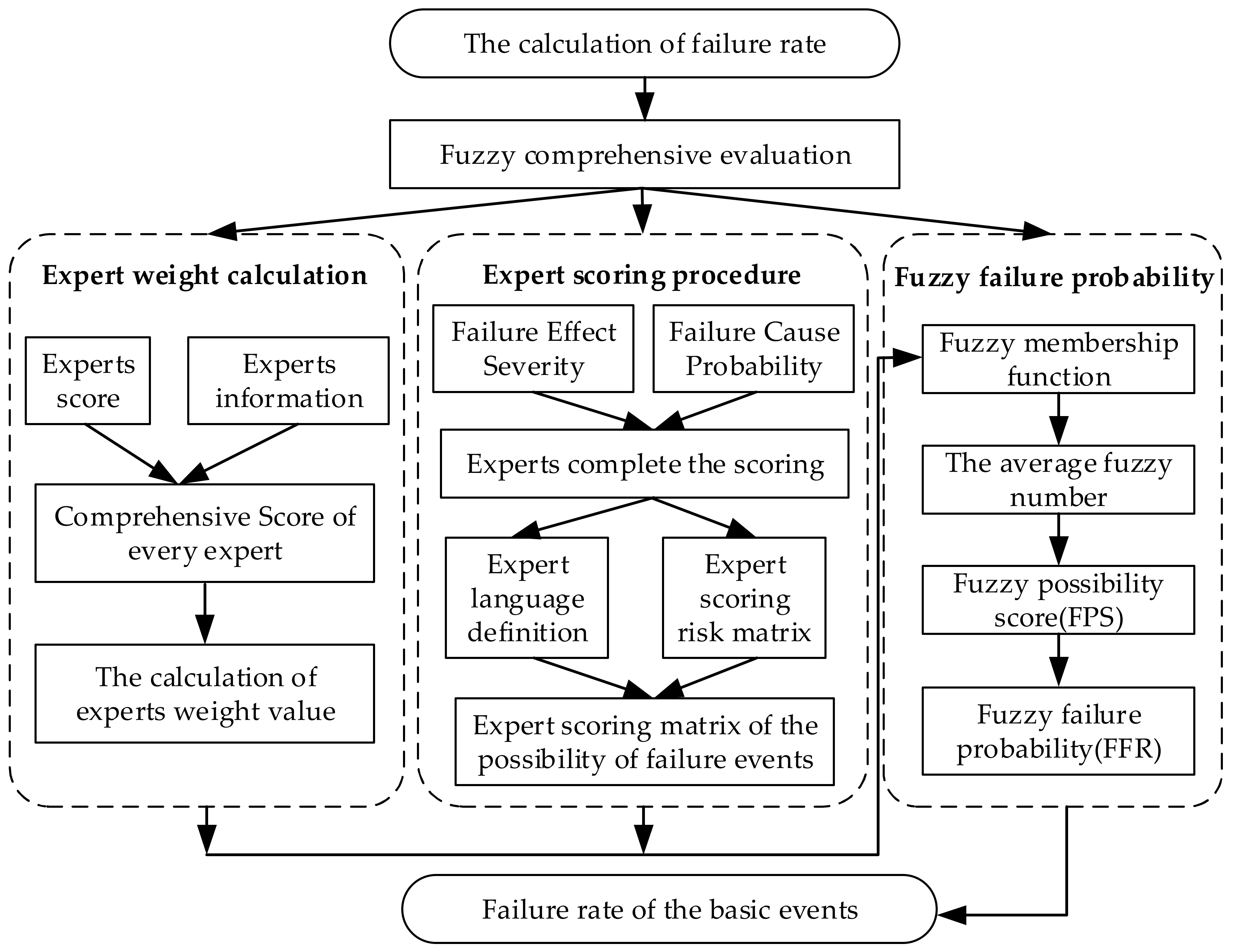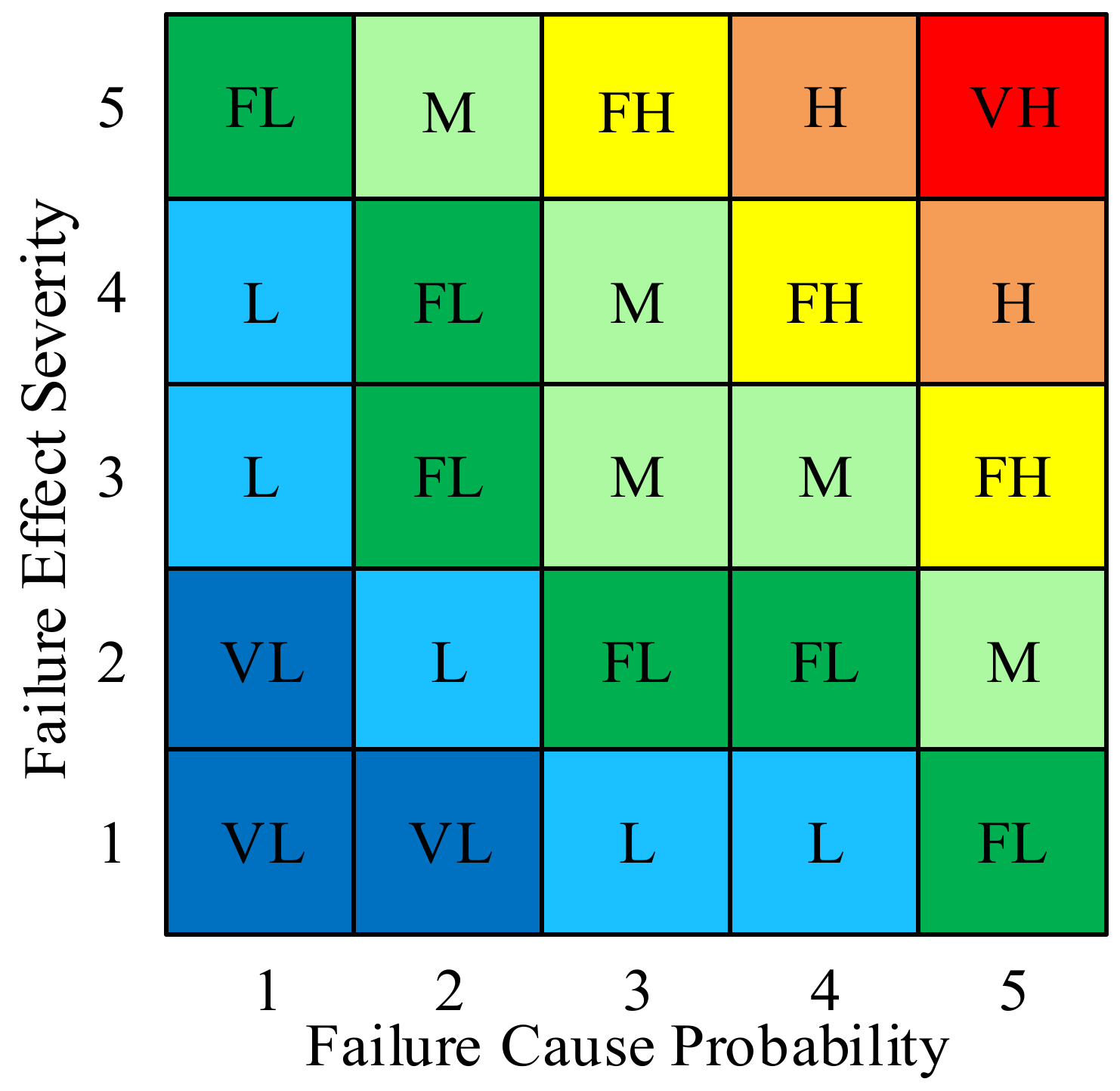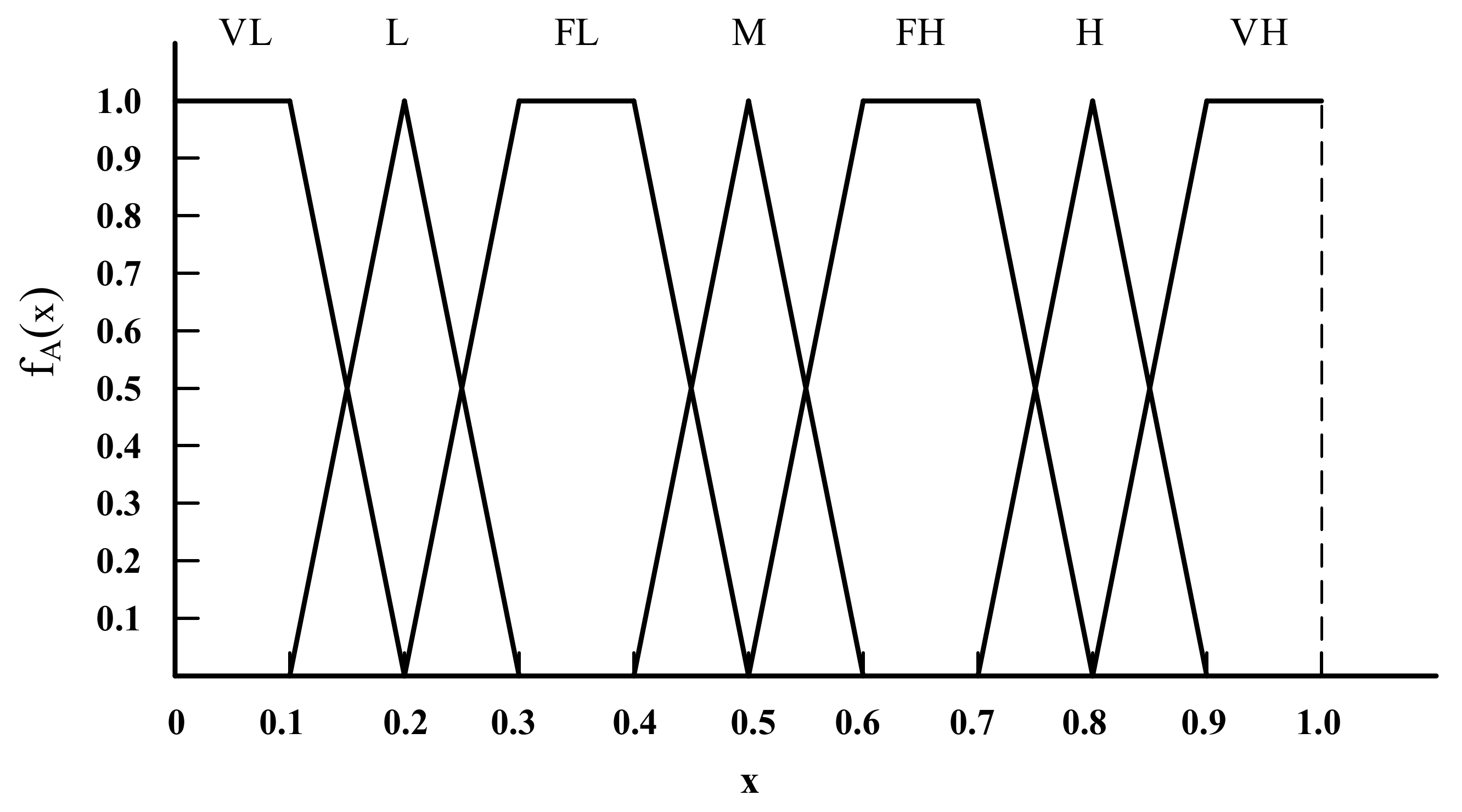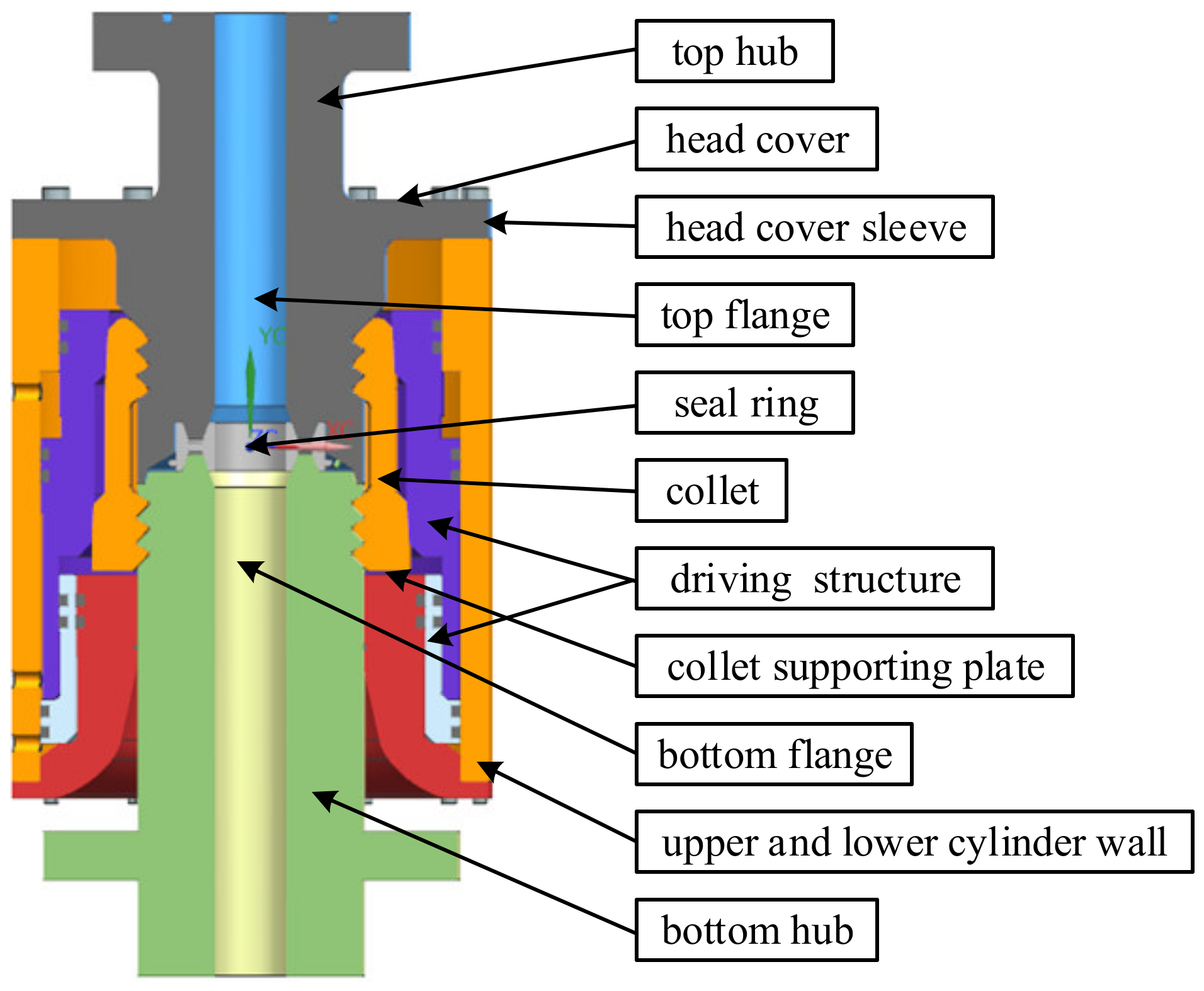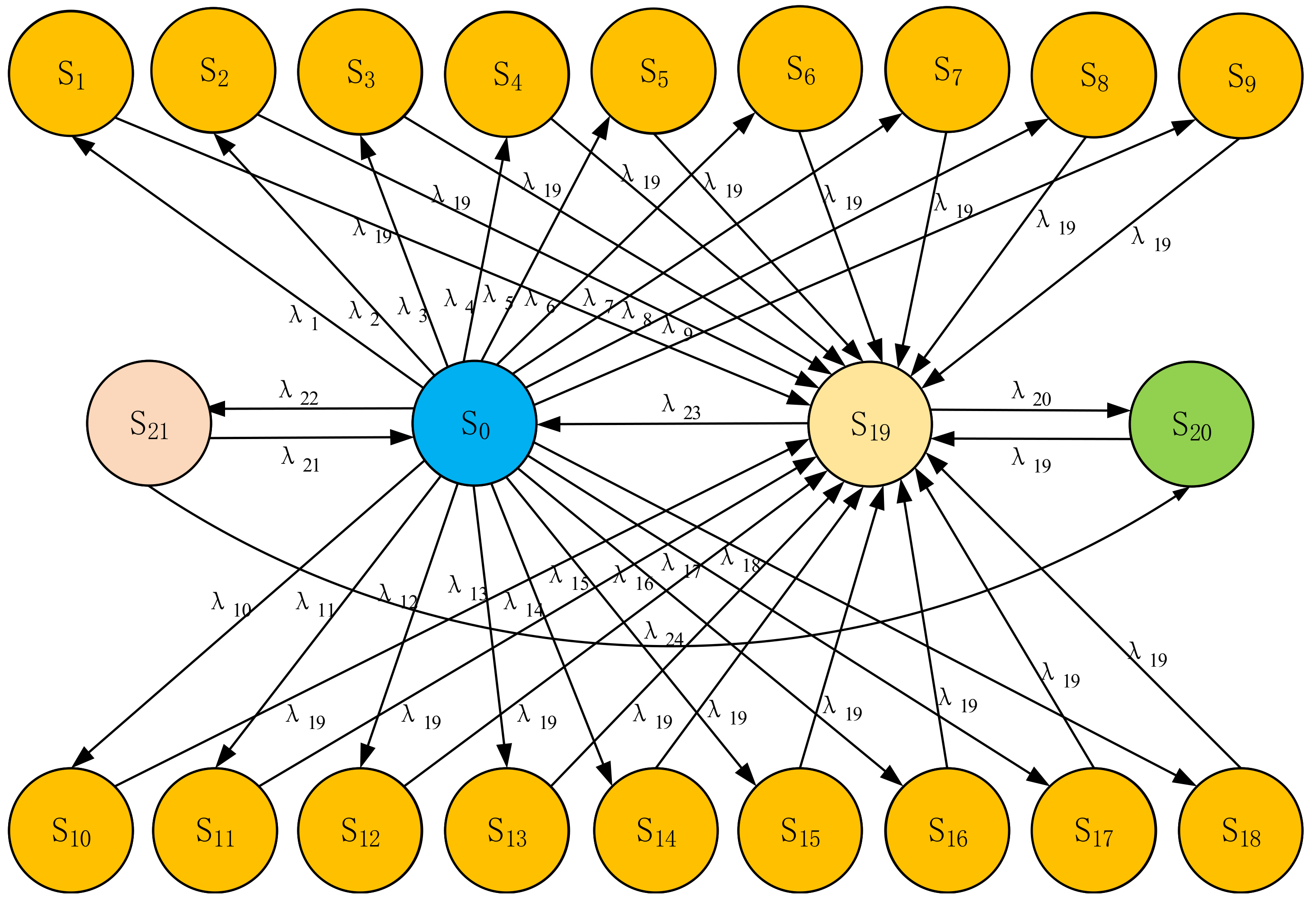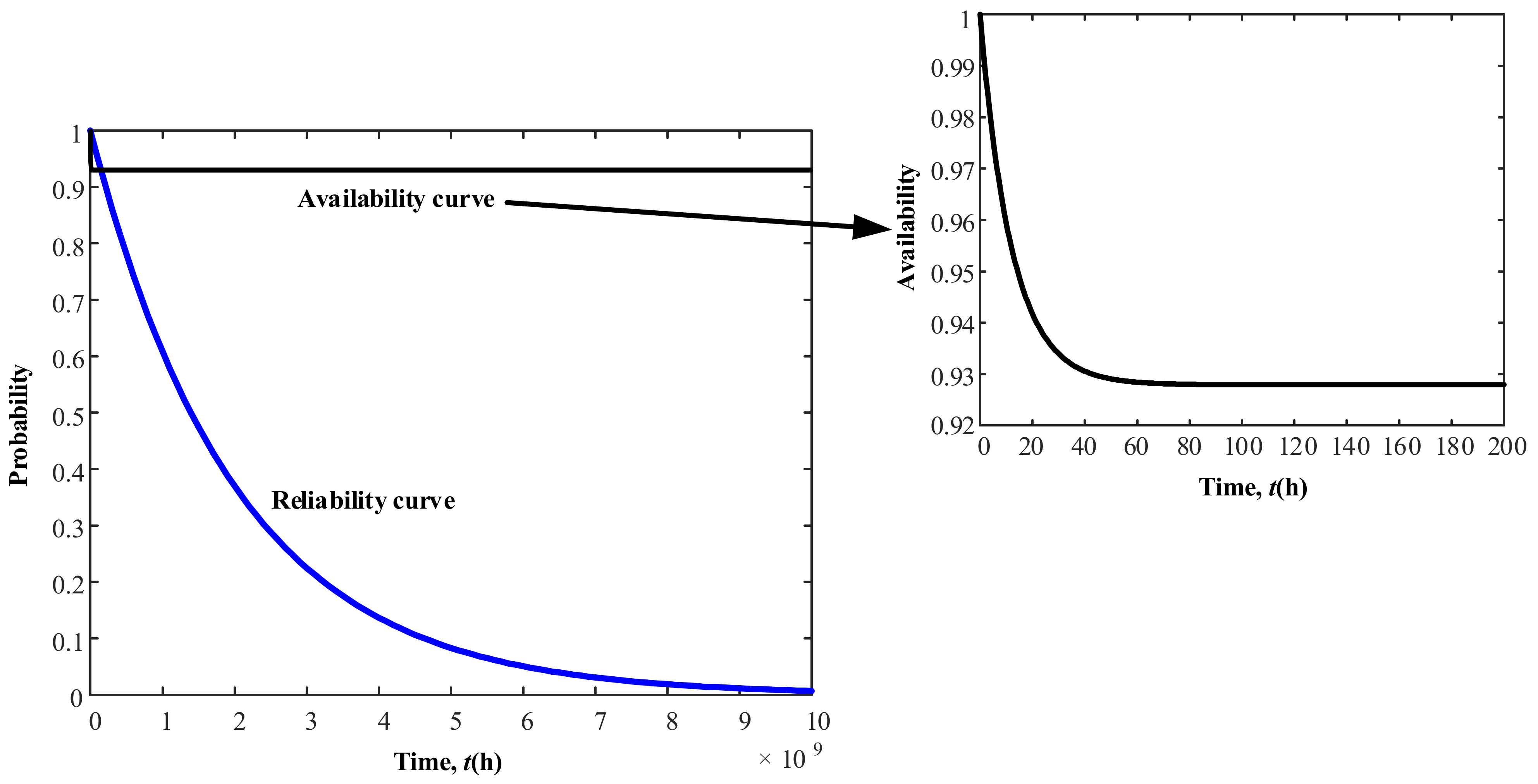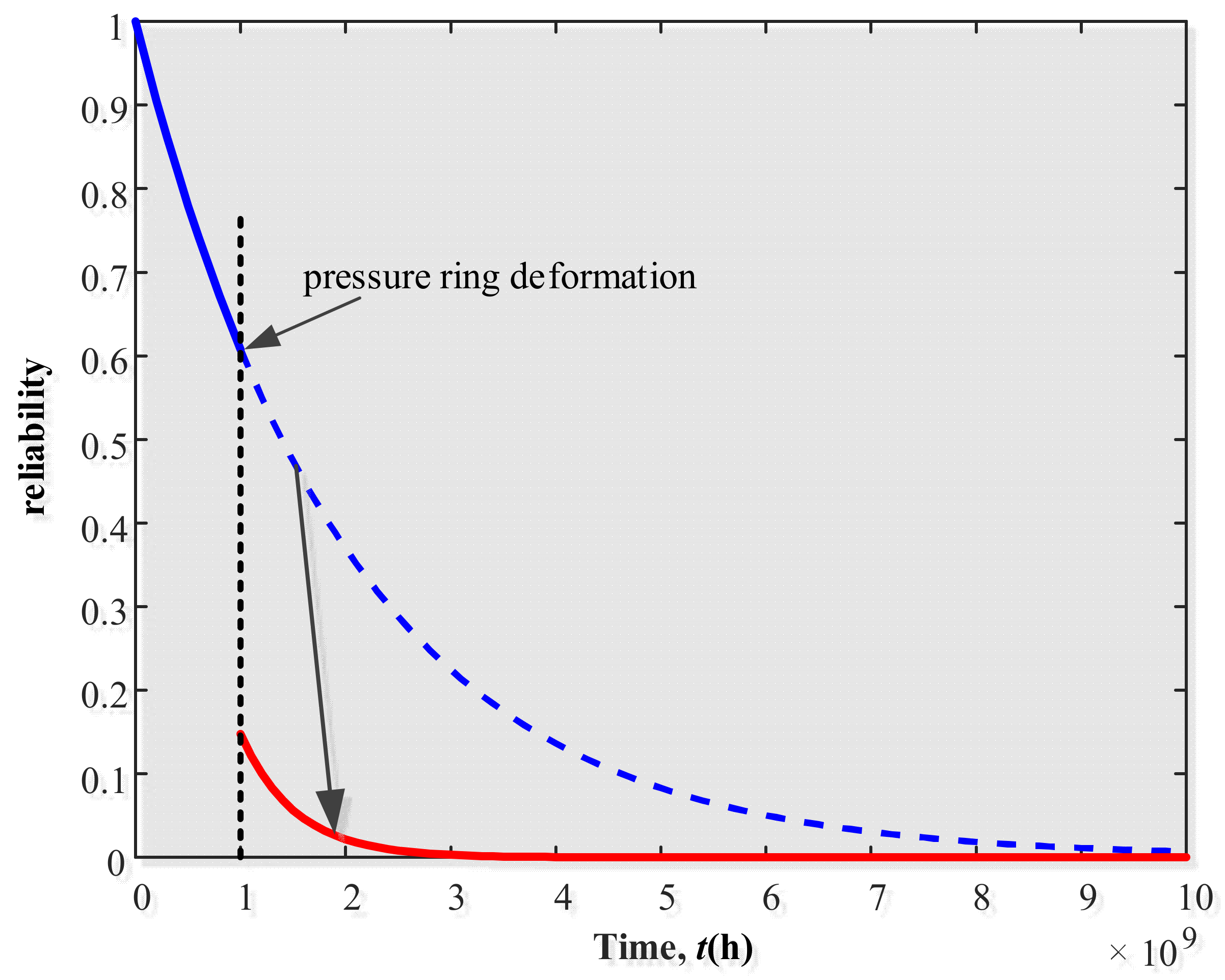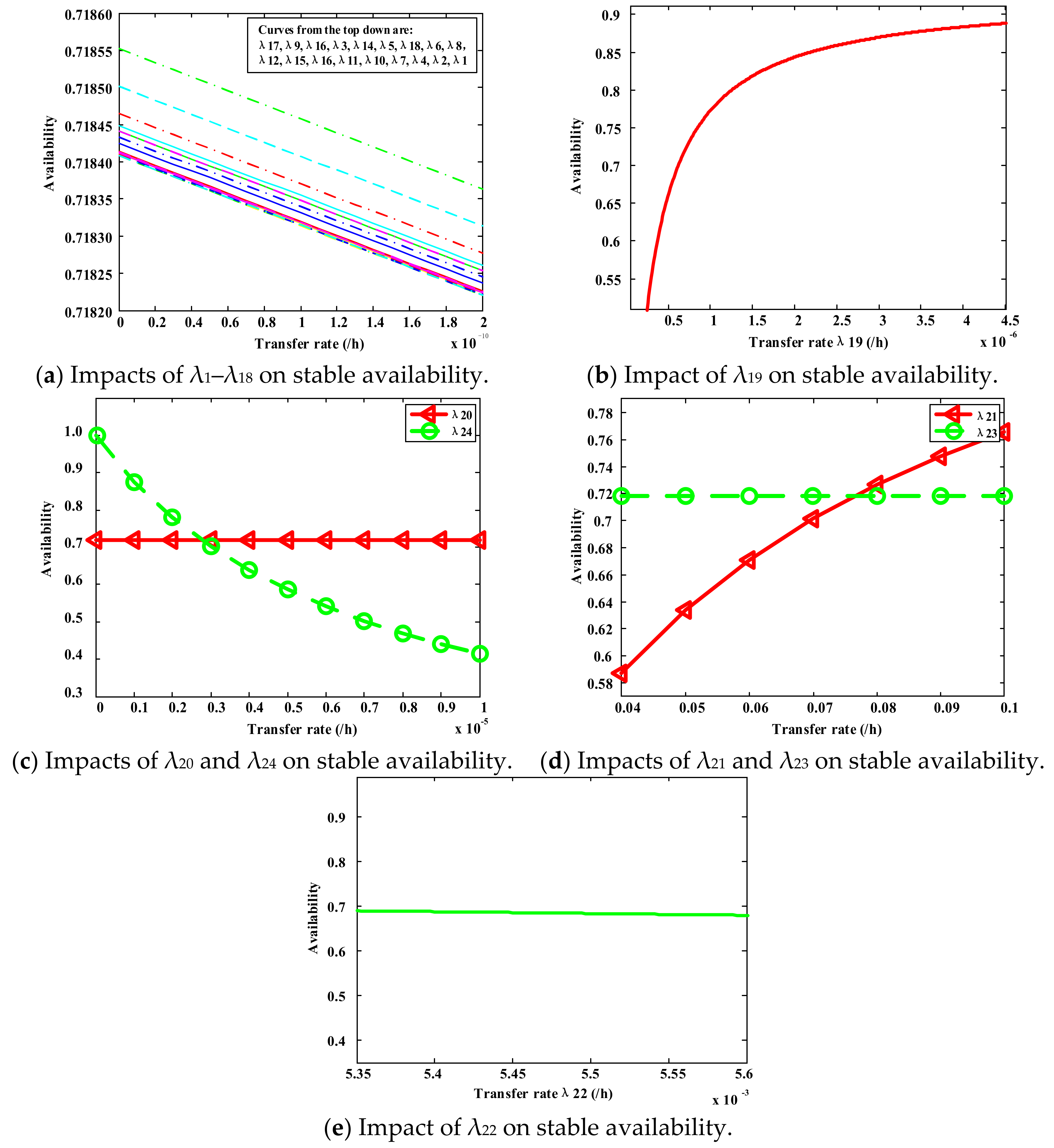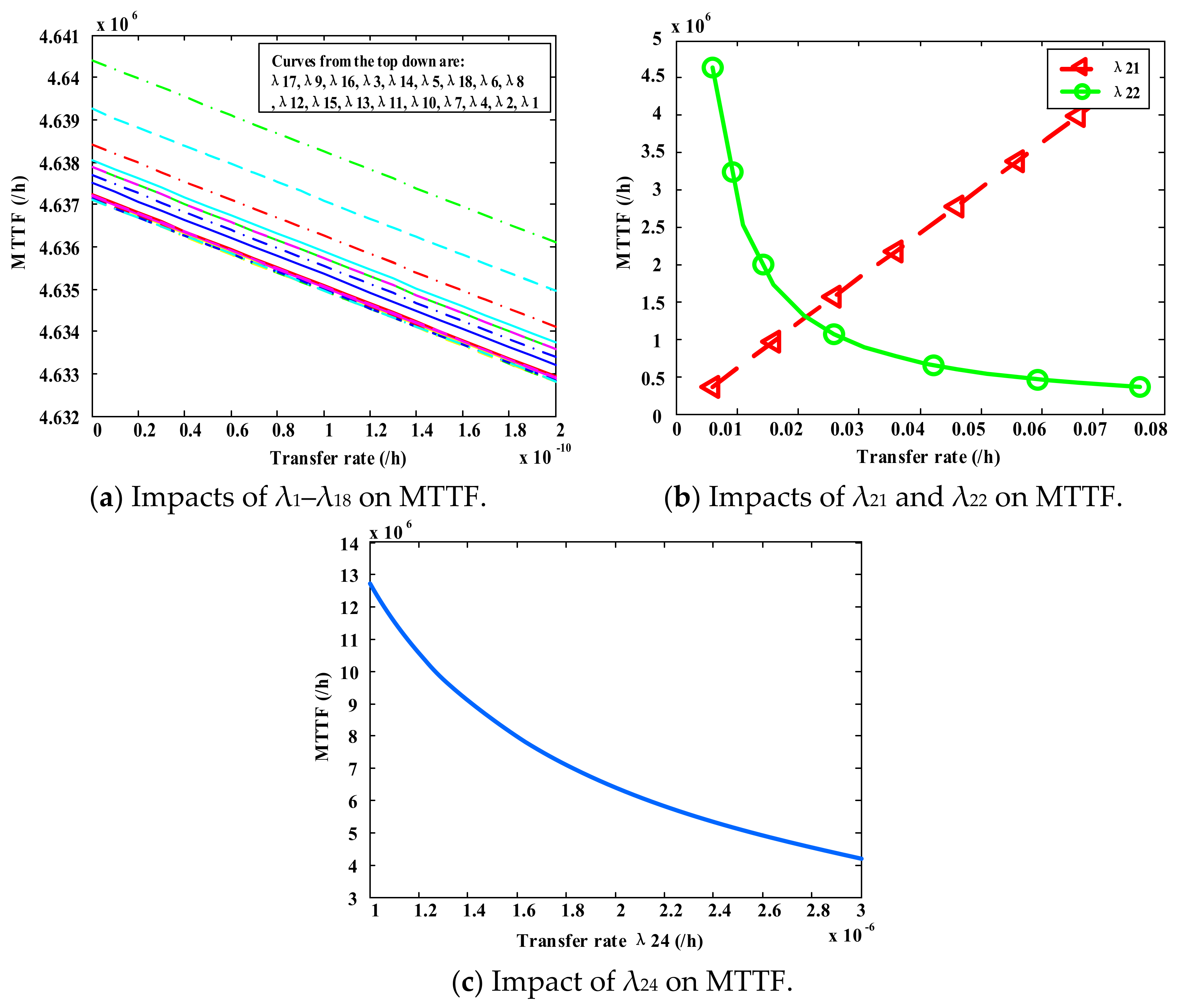1. Introduction
Many engineering systems have such characters as high technology, high investment and high risk. During the operation process, the complex system is enormously affected by the internal and external loads, such as vibration, fatigue, temperature and human operation factors, even subjected to various hazards including natural disasters, terrorist and criminal acts [
1,
2,
3]. Once an accident occurs, it will cause a series of problems such as transport accidents, explosions, casualties, fires and chemical and biological emission. Especially equipment storing inflammable and explosive materials such as chemical fuels, aviation equipment that is extremely hazardous in the event of an accident, and facilities that transport oil and gas energy have negative effects on environment, economy, society and life if an accident happened. Therefore, good judgments should be made on the risk, reliability, availability and uncertainty of such facilities.
A series of analysis methods were proposed over the years for reliability and risk evaluation, such as fault tree, bowtie, event tree, Petri nets, Markov models, Bayesian networks and so on. Though these methods can model potential faults, they have limited capabilities to handle insufficient data of failure probabilities, therefore resulting in an inaccurate risk assessment result [
4]. To resolve this issue, expert evaluation and fuzzy theory were adopted to calculate fuzzy failure probabilities of risk factors. The method can characterize the uncertain parameters involved in a risk analysis process [
2,
5]. The method has been extensively used in engineering fields, such as aerospace, subsea facilities, energy, transport, etc. Mentes introduced it into fault tree to calculate probabilities of base events of spread mooring systems [
6]. Babaleye [
7] proposed a Bayesian network-based model for well plugging and abandonment in uncertain conditions with limited data. In addition, researchers such as Yang [
8], Lavasani [
9], Zhang [
10], Chang [
11], Zarei [
12] and Yazdi [
13] all made related research works. According to previous studies, the “Failure Cause Probability” and “Failure Effect Severity” play vital roles in the reliability and safety of the system. Thus, the “Failure Cause Probability” and “Failure Effect Severity” of risk factors should be considered. Considering the weight coefficient of every expert, the comprehensive risk value of the failure event can be obtained. After sufficient data are available, an accurate analysis of system reliability and availability can be performed. The assessment of the availability and reliability of a multi-state degraded system with repairs and preventive maintenance usually uses a Markov process [
14]. The availability of subsea Blowout Preventers in the Gulf of Mexico Outer Continental Shelf was investigated using a Markov method by Kim [
15]. Liu [
16] presented a Markov method to analyze the reliability of the electrical control system of a subsea blowout preventer stack. Wang used Markov processes to model the reliability for the electrical control system of the subsea control module [
17] and enhanced the reliability within the given space [
18]. Fuzzy theory and Markov technology have been increasingly used in reliability and risk analysis studies. However, due to the increasing complexity of engineering systems and the inherent limitations of each technology, many scholars [
19,
20,
21] have used a combination of multiple analysis methods to evaluate the system performance; the use of hybrid models is a general trend.
In addition, because the risk of the engineering system abounds with uncertainty, uncontrollability and randomness, it is necessary to use the uncertainty analysis method to evaluate the operation of the system. Arnone proposed a probabilistic approach to account for the uncertainty of shallow landslide assessment. This method can evaluate the location and time of the possibility of soil failure plane by calculating the joint probability [
22]. Aven presented a framework to link the stochastic variation and uncertainty distribution for the production availability [
23]. Liu proposed a probabilistic analysis approach based on finite element analysis and a vehicle load model to determine the uncertainty of fatigue crack growth [
24]. Many works use probabilistic models to represent the impact of uncertainty on the system over time. However, uncertainty is random and cannot be accurately represented by a probability model. The fuzzy Markov method proposed in this paper can avoid the work of selecting a probability model, conduct a specific analysis for the uncertainty problem, and provide new insights and guidance for how to understand the impact of uncertainty on the system. The different fuzzy Markov chains have been proposed for the decision-making of uncertain problems by some scholars. Gharehbaghi [
25] used fuzzy theory and Markov chain to evaluate the structural integrity of transportation bridges. Song [
26] and Kavikumar [
27] predicted the state of the controller by combining fuzzy theory and Markov model. Guan [
28] proposed a fuzzy Markov chain single-step transition matrix to evaluate the inherent rules of stock historical fluctuation. These fuzzy Markov methods are based on a given fuzzy range [
29] or dozens of sets of cases [
25] for target prediction, which can be well used in medical treatment [
30,
31], transportation [
25], power station energy [
32], etc. The fuzzy Markov in this paper is based on the previous method, adding dynamic iteration when failure of the system occurs. It can follow the system state in real time, is not limited to a fixed fuzzy range and any sets of cases, and can classify the uncertainties of different failure modes in different states of the system. An example of a subsea wellhead connector is used to illustrate the method in this paper.
This present work is aimed at developing a new model for the availability, reliability and uncertainty analysis of engineering systems, which can be used to sort out the impacts of different failure modes and uncertainty problems on the system. The paper takes the subsea wellhead connector as a case study. The rest of the paper is organized as follows:
Section 2 describes in detail the analysis techniques of risk analysis methods followed by a full presentation of our proposed fuzzy Markov methodology.
Section 3 presents the case study. In
Section 4, a detailed discussion of reliability, availability, uncertainty and impact analysis was performed based on the established model and results. Finally, conclusions are given in
Section 5.
5. Conclusions
Aiming at the problems that the failure of engineering system is difficult to predict and the accurate statistics are lack, this paper presented the fuzzy Markov method integrating the fault tree analysis, fuzzy comprehensive evaluation and the Markov model. The method, comprehensively taking the normal operation, faults, maintenance, maintenance tests and periodic tests of the system into consideration, evaluate the availability, reliability index and the impact of uncertainty on system reliability. The proposed method was validated by the subsea wellhead connector.
The results of the study of the subsea wellhead connector proved the benefits of the proposed methodology in general. Compared with other traditional methods, the fuzzy Markov can not only analyze risks, reliability, availability and maintainability, but also obtain unknown failure data. Moreover, the analysis of uncertainties was improved significantly. As shown in the discussion and results, the availability and reliability curves of the wellhead connector, the impacts of different components on system availability and the mean time to failure are obtained. According to the impact analysis, relevant recommendations for reliability design and relatively effective methods to improve system availability can be obtained. Most importantly, the model can update the system reliability according to the type of accident when the uncertainty occurs, which cannot be achieved by traditional methods. The analysis results obtained from this study can be provided as the reference for risk decision-making in the wellhead connector operations. The method in this paper can be used to obtain the corresponding conclusions of other complex engineering system.
The fuzzy Markov proposed in this paper takes full advantage of the fault tree, fuzzy comprehensive evaluation and Markov method to make the analysis of risk, reliability, availability and uncertainty all in one, which a single traditional method cannot do. Compared with the previous fuzzy Markov method, the method adds dynamic iteration when failure of engineering systems occurs. It can follow the system state in real time, not limited to a fixed fuzzy range and any sets of cases, and can classify the uncertainties of different failure modes in different states of the system. According to the occurrence and severity of the uncertain problems, it can iterate the “Failure Cause Probability” of the corresponding failure mode, and update the real-time risk and reliability prediction model, which is more convenient and accurate for solving the uncertain problems of the engineering systems.
This paper assumes that the maintenance rate is constant. A future scope of the work can be directed toward the evaluation of the maintenance rate of engineering system, and more specific results can be obtained by referring to the method in this paper with specific maintenance rates.

